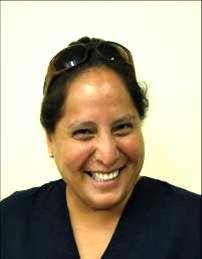Luzma Moyano, MMed, MBChB, PhD

Nominated From: University of Washington
Research Site: Peru
Research Area: Neurology
Primary Mentor: David Tirschwell
Research Project
Text messaging to improve control of high blood pressure and diabetes to prevent stroke in primary care
Stroke is the second most common cause of death among women and the third most common cause in men living in the Andean region of South America, an area that includes Bolivia, Colombia, Ecuador, Peru, and Venezuela (1). Despite this significant burden of cerebrovascular disease, there is a concerning lack of epidemiologic research regarding stroke rates, risk factors, prevention, and treatment in this region (2,3). The World Health Organization Monitoring Trends and Determinants in Cardiovascular Disease (MONICA) project does not include stroke registry information for any country in the Andean region (4). In Peru, only two epidemiologic stroke studies have been conducted in the past 20 years. The first in South America and Peru was a population-based study in Cuzco, Peru that reported an age-adjusted prevalence of 5.74 per 1,000 and a stroke incidence of 1.83 per 1,000 people (person-years) (5) and others about risk factor in population hospital-based studies (6-10)
The use mobile devices in epidemiology for chronic disease is starting to have relevance with stroke via alerts to identify an event, to manage stroke, for evaluation and rehabilitation (11) but there is scarce information about use of this technology for primary prevention of stroke in rural villages for chronic underlying conditions as hypertension and diabetes. Previous field work performed by the Center for Global Health-facilities Tumbes demonstrated that close to 80% of people who had a first event of stroke had not regularly took their medication to control high blood pressure or diabetes and more than 50% had first sought care with a “Curioso” or Shaman doctor. Even through all health centers had basic medication to prevent hypertension or diabetes, they didn’t go to pick up medications (unpublished data of CGH).
Specific Aims
Aim 1. To develop an intervention cohort of people at risk for stroke in rural northern Peru. Procedures: we will conduct a door-to-door survey in rural communities of at least 1,000 inhabitants to identify people older than 15 years old with hypertension or diabetes. The survey will be administered by ancillary clinical professionals (nurse technicians, laboratory technicians, nurses, etc.) specifically trained by a team of certified neurologists and epidemiologists to apply the survey tool. Training will involve educational materials, lectures, and practice sessions for approximately a week, plus an online course on human subject research protection. Participants who screen positive for hypertension or diabetes will need to show a medical prescription and/or the last measures of blood pressure or the last exam of fasting glucose; those who fulfill the inclusion criteria will be included in the cohort.
Aim 2.To evaluate adherence of treatment in people with hypertension or diabetes using a reminder via text messaging, Intervention Community; we will send a daily text message to remind subjects to take the pills for their underlying disease (hypertension or diabetes) and provide dates of evaluation. A General practitioner (GP) in rural service will be trained in primary care attention for people with stroke and she/he will make an evaluation of health status monthly; a better health status means an adequate adherence with prescribed medication(s).
Aim 3. To evaluate Quality of Life (QL), health workers at the beginning and the end of the intervention will apply a validated survey to measure the improvement of their QL.
Research Significance
Taking advantage of the widespread use of cellphones in rural communities and the extensive community-based fieldwork experience of the Center for Global Health in Tumbes, this pilot study will assess the use of text messages to mobile device as reminders to improve compliance with medication to control high blood pressure or diabetes as mayor risk factors for first stroke. If successful, this technology could easily be adapted for use in the United States to reach people living in both urban and rural communities to improve adherence with proven preventive treatments for hypertension and diabetes – two of the most common risk factors for stroke and heart attack.
Publications
Mentors
- Dr. David Tirschwell, University of Washington
- Dr. Jaime Miranda, Universidad Peruana Cayetano Heredia
- Dr. Héctor H. García,Instituto de Ciencia Neruologicas Lima, Peru
- Dr. Silvia Montano, US Naval Medical Research Unit No. 6 Lima, Peru
